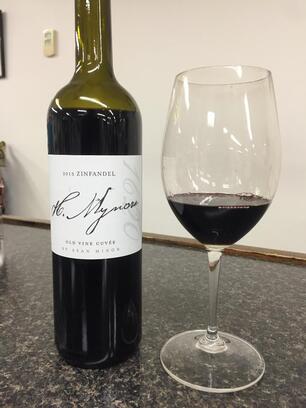 As an homage to the people and wineries in California affected by the rash of wildfires this last week, we put out a wine for tasting that represents California very well. First off, Zinfandel probably is culturally the most significant grape in California, with hundreds of vineyard sites that cross generations of families in Sonoma, Napa, the Sierra Foothills, and others that connect back to the Italian immigrants that brought the vines over. Back then it was known as Primitivo, and it was planted in mixed vineyards with other varieties, but over time the variety prospered and came to dominate new vineyards as they were expanded. While many wineries still famously make 'field blends' from what the sites are planted to, Zinfandel tends to be the star. There is still a cultural 'hangover' in the perception that Zinfandel is a sweet wine, due largely to the White Zinfandel craze of the past, but also to the high presence of mass marketed Zin based blends that hide a LOT of residual sugar behind the term 'Smooth' and 'Bold' on the labels. A well made Zinfandel, like this one, can be a wine with bold flavors and smooth textures without leaving excess sugar behind to hide the deficiencies. Deep purple color in the glass but with some clarity around the edges, this shows a lovely nose of warm red and black fruits with some dark baking spice and a slight touch of toasted oak (only 15% new barrels used), but nothing candied or over-amplified, and no boozy tones from excess or out of balance alcohol. The first sip is ample on the palate with loads of currant and black cherry flavors, and the tannins are very fine to allow a smooth and pleasant mouthfeel, but it's accomplished with absolutely no sticky or melted jelly sensations, even finishing with a dusty grape skin or peppery note that's undeniably dry. This has a lot more in common with the old school, food friendly Zins of the past, marrying some savory to the fruit and making it much more versatile.
0 Comments
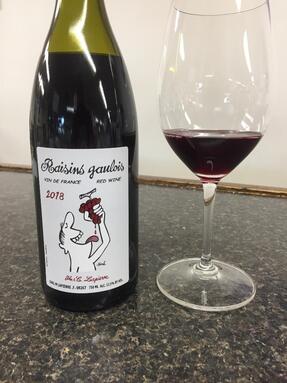 With November quickly approaching, we are starting to get our turkey signs dusted off for our Thanksgiving wine selections. It never hurts to start making a few choices early before the rush starts on your personal favorites, so start thinking about grabbing a few provisional bottles and stashing them away. The Beaujolais Nouveau frenzy won't start until the week before Thanksgiving, which is just fine for us because it gives us time to remind everyone just how great the REST of Beaujolais is, and how quickly the quality goes up even in small price increases. Marcel Lapierre is one of the legends of Beaujolais, part of Kermit Lynch's 'Gang of Four' that helped to bring the region back from the brink of mediocrity in the 80s. This wine is a unique outlier to many producers in that it walks the line between the Nouveau and Cru designations, so much so that it doesn't even have a designation in their appellation system and has to carry the basic 'Vin de France' name. Most of the fruit here comes from their youngest parcels in the Cru of Morgon, with some other younger vineyard sources elsewhere in Beaujolais. This sees just a touch of carbonic maceration (the process that gives Nouveau its soft grapiness) and ages for a short time in tank to preserve the softness, but still imbues the savory texture of a Cru wine as well as giving it a much better shelf live than a Nouveau. A bright juicy purple color in the glass without being neon level radiant,the aromas have plenty of fresh pressed grape juice in the nose to pull in most every Nouveau fan, but the second and third whiffs start to pull out the more traditional savory Gamay notes, hints of tart cherry skin and peppery herbs. The palate is super juicy, and thanks to the wine not being filtered there is still plenty of fine tannin texture that helps to pull out a lot of the more savory fruit the longer the wine sits in your mouth. There is also the nice tinge of tartness on the palate that comes from the traditional use of native yeasts, versus the industrial yeasts often inoculated to the mass marketed Beaujolais that gives them the overriding bubble gum character. As tasty as a Cru Beauj but with a few of the potentially harder edges polished off with 500-grit sandpaper, this will be a winner with pretty much everyone at the holiday table. 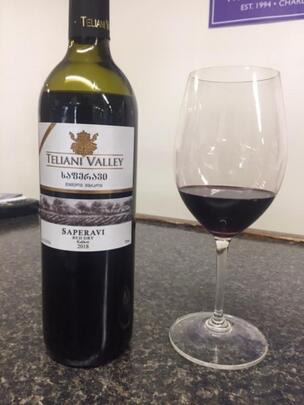 Ever on the search for great quality wine from anywhere around the world, we travel to the often forgotten but historically important region of Georgia for this week's wine. Situated between the Black Sea and Caspian Sea, the winemaking culture here is among the oldest in the world, with evidence tracing back over eight thousand years. Politics have hindered the development of the industry more than potential quality, as the connection to the Soviet Union put much of its modern existence behind the Iron Curtain, inhibiting modern techniques and new markets outside of Moscow and other major cities. Even though the wines were reduced to mostly bulk production, Georgia has always maintained a higher reputation for potential quality, and as they have become an increasingly independent state they have looked to capitalize. Saperavi is probably the best known red grape in Georgia and the other countries around the two inland European seas, one of the few native grapes with a healthy and positive reputation for long term aging. Thanks to some of the modern techniques that have arrived in recent years, those hearty and rougher edges can be polished off a bit to make a wine that has more immediate gratification, enabling more wines to get bought and sold quickly in the world market and have more consumers trying these tasty wines. Deep, inky purple color in the glass, with a first whiff to match that's filled with dark spice and almost sweet blackberry jam tones. The longer it is open, the more savory it grows, with somewhat garrigue-like spice that calls to mind a COtes du Rhone with a lot of Syrah and Mourvedre in the blend. In the mouth the texture feels as rich as you would expect from the look and aromas, but the tannins are surprisingly forgiving and the fruit characters are not sweet at all. In fact, most of the lingering flavors through the finish are tart black cherry and even citrusy with a flash of nervy acidity at the end. A great wine to pair with hearty comfort foods, stews and roasts and the like. INSIDER'S PICK: DOGA DELLE CLAVULE MORELLINO DI SCANSANO (WINE SPECTATOR 90points) $17.9910/10/2019 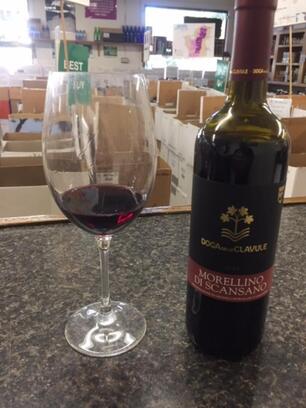 Most Americans, even the savvy tourists, may not be familiar with the Italian city of Grosseto and the region of Morelino di Scansano, or even aware that it's part of Tuscany. As a coastal city almost exactly equidistant from Florence and Rome, it just doesn't have the historical or cultural significance to make the buses stop in the same way a city like Pisa does, lucky enough to have a crooked bell tower everyone want to take a picture of pretending to hold it upright. Also not quite close enough to the coastline to be considered a 'beachfront' city to attract the locals for a Mediterranean getaway. But like every region of Italy, they do make wine, and their coastal influence allows them to make wines unlike any others in Tuscany. The warming influences from the sea provide for a richer character to the Sangiovese they grow (Morellino is the local name for the Sangiovese grape), and has also allowed grapes like Syrah, Grenache and Alicante Bouchet to thrive as well, giving those grapes fair use in the Scansano DOCG. The resulting wines carry a certain Tuscan signature polish, but can be much warmer and wilder depending on the amount of Sangiovese used. You also see a fair number of experimentation with 'naturalist' winemaking and other innovative styles, thanks to the lower cost of vines here and relatively low scrutiny on traditional styles, giving producers the freedom to explore and create their own paths. Rich and warming on the nose, there are hints of a Chianti-like dark fruit and leathery tones behind the spice and cherry that pop forth almost immediately, gaining a touch more savory and structured tone as it opens up. The palate is richer and a bit more saturated than the usual Tuscan wine, but shows a lot less of the juiciness than it shows on the nose, with a lot of dark leather, anise, and currant flavors. At the same time, expecting a chewier tannin to come along with the flavors, the feel is actually very fine and approachable, only showing a bit of dustiness that lingers on the finish. The familiar side of this wine works in well with all sorts of traditional red meat dishes you could use a Chianti for, while the warmer fruit side gives you license to try it with hearty dishes that may have a bit of heat of aggressive spice to them as well. 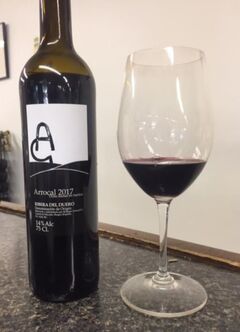 Assuming that it will in fact get cool again in Central Virginia in the near future (90+ degree days in October aside) it's a good time to check in on some wine options that will be well appreciated for their rich and hearty character. While the Rioja region is Spain tends to show the more elegant Old World influence for their Tempranillo based wines, the Ribera del Duero has more of a bold and brash style that's definitely more modern and New World influenced. At almost every stage of creation for the wines, from vineyard to winery and to the shelf, the mindsets are different, and the resulting wines almost don't taste like they have a grape in common. Where Rioja tends to have more in common with Bordeaux or maybe Tuscan wines, Ribera del Duero shares more with Californian or Washington Cabs, or even Malbecs from Argentina.The richness in texture, dark color, and tendency to use more American oak for aging the wines definitely leave an imprint. Arrocal is consistently one of our favorite sources from the Duero for what they deliver for the money, never over the top in style but still showing all the great hallmarks of the region. Deep and inky purple in the glass, the nose is loaded with almost sweet black fruits and spices with just a touch of toasty vanilla from the oak (only 8 months total, with no new oak used). Often the tendency is to use more new oak in a shorter period, but the rich wine doesn't need the help here, and oak would only take away from the immediate pleasure. The palate is as deep and dense as the color in the glass, with lots of currant and blackberry completely coating the mouth, seeming heavy at first but quickly showing the fine natural tannins and even some balancing lift of acidity. This is a big wine, but not a plodding monster, with lots of subtlety that emerges as the wine opens up and never feels chunky or overwhelming. Definitely a wine that warms the soul along with a hearty meal. |
The Best of the Best.We offering free tastings on these wines in the store every Thursday and Friday, and a 10% discount off the retail price through the duration of the day. Come on by and give them a try! Archives
July 2024
Categories |
Location |
|

 RSS Feed
RSS Feed